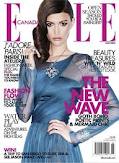A while ago I purchased a Groupon for a microdermabrasion facial from a local laser skin care and rejuvenation center. Included in the bargain basement price was a consultation with a skin care specialist. Aware that the business offered several expensive cosmetic procedure I wasn’t entirely surprised that although I had listed dry skin and occasional breakouts as my only skin concerns, the “skin specialist” I spoke to suggested I “really consider Botox” for the “lines around my eyes and on my forehead.” In a bid to reassure me that Botox is safe and effective, she let me know that she herself had regular injections. True, she had nary a line on her face. She also appeared to be about 25 years old. Granted, she could be 50 and her apparent youth the result of the wonders of Botox. Yet a glance at the stud through her cheek, Lulu Lemon tights and Sketchers sneakers suggested this to be highly unlikely. (So as not to undermine her credibility, I will also point that she was wearing a white lab coat, the epitome of professionalism). Even still, I declined the Botox. At 31, if I choose to look closely, I can certainly see where my face folds when I smile, frown, squint, laugh, or furrow my brow. I just feel that as long as I can still get away with referring to these as “expression lines” I will continue to age gracefully. (With the exception of my Vitamin A face wash, 2 eye creams, retinol serum and day and night anti-aging moisturizers). We’ll see how I feel in 10 years.
Botox is only one tool in the anti-aging arsenal. The technology available to essentially “turn back the clock” seems to grow every day. Procedures are also becoming less invasive, more convenient, and involve less downtime, meaning people can literally walk into their doctor’s office and walk out a newer, younger person almost instantly. It seems every other week I’m reading about a new technique to treat some cosmetic condition that I have never even heard of or never would have thought about as a physical defect. A few posts ago I wrote about cosmetic surgery for feet. I have often cursed my wide feet while shoe shopping, but never would have thought about this feature of mine as a treatable deficiency. I have just accepted that I would have to live with this trait. Alas, not anymore! With advances in cosmetic surgery, wide footism is treatable! It makes me think: Are these advancement in cosmetic surgery serving to address existing weaknesses that impede people’s lives either physically or psychologically or are these new procedures actually generating anxiety and perceived imperfections out of the normal variations among us?
Let me illustrate this quandary using the prescription lash enhancement drug Latisse. You have likely seen the advertisements for this product featuring gorgeous spokesmodel Brooke Shields. The preparation itself was originally (and still is) used as an eye drop to treat glaucoma when it was noted that patients using the solution developed thicker, longer eyelashes. Result: Latisse. The cosmetically marketed product is brushed on the lashline, and about 12 weeks later you have longer, darker, thicker lashes. Of course any substance seeking FDA approval to be sold by prescription requires a valid medical indication. And this is the kicker. Allergan, the company marketing this “medication” has identified a medical condition called hypotrichosis, defined as “inadequate or not enough lashes”. That’s right, if you are a person born with thin, lightly colored or short eyelashes, you now suffer from a treatable medical condition. The bad news is that hypotrichosis is a chronic, debilitating medical condition that will plague you for the rest of your life. There is no known cure. The good news is that the good people at Allergan have come up with an effective treatment. As long as you keep using Latisse you will have longer and thicker lashes. But you can’t stop using the solution or your eyelashes will shrink back to their original form. Hypotrichosis requires lifelong treatment.
Beyond the now routine procedures such as Botox, Restylane, lasers, implants, tummy tucks and liposuction, the cosmetic surgery industry has progressed to produce processes to “treat” the natural variations that make us unique and distinguishable from one another. Enemy number one is any natural sign of aging. Newer additions: surgery to fix a cleft chin, liposuction to treat “cankles”, turning an outie bellybutton into an innie, iris implants to turn brown eyes blue, abdominal etching (selective abdominal liposuction to give the appearance of a “6-pack”), butt implants, bicep implants, calf implants, and even pubic hair implants. What next??
Cosmetic surgery can be a touchy subject with people feeling strongly in one direction or another. There are those who feel that any attempt to be physically altered is wrong. Others are more accepting of such a metamorphosis. I find most people are in the middle. The majority of us see some of our traits as requiring reinvention, while other deviations from the middle ground are the result of simple human uniqueness. Whether demand is influencing supply or vice versa, it seems that as people continue to seek physical perfection, advancements in the cosmetic surgery field will continue. Perhaps we need not attack the industry itself, but rather take a hard look at the way men and women are represented in the media and society as idealized specimens. Finally, we have to remember that we have the autonomy to refuse to buy into the message that we are being sold. We still have free will until it goes out of style.























